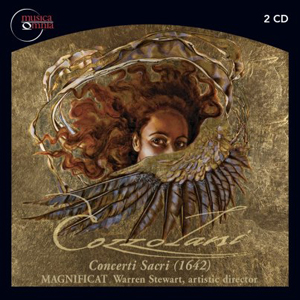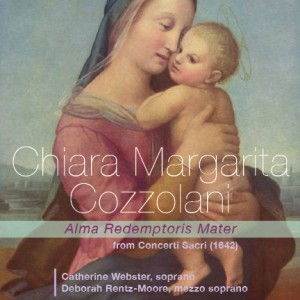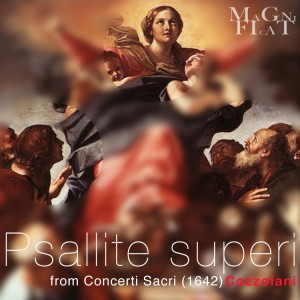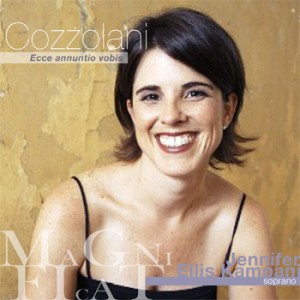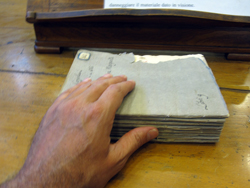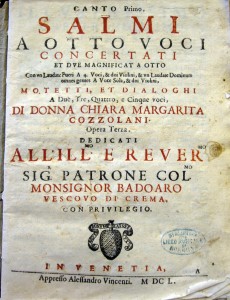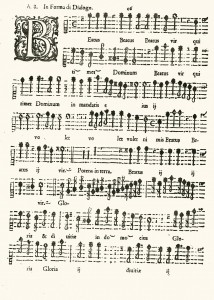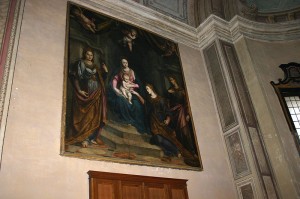Notes for Cozzolani Concerti Sacri (1642)
 In dedicating her new book of motets – Latin-texted compositions to be sung in and out of liturgy – to the Tuscan prince Mathias de’ Medici (1613-67) on Mathias’ name-day (the feast of his patron saint), 25 February 1642, the Benedictine nun composer Chiara Margarita Cozzolani (1602-c. 1677) expressed her homage thus:
In dedicating her new book of motets – Latin-texted compositions to be sung in and out of liturgy – to the Tuscan prince Mathias de’ Medici (1613-67) on Mathias’ name-day (the feast of his patron saint), 25 February 1642, the Benedictine nun composer Chiara Margarita Cozzolani (1602-c. 1677) expressed her homage thus:
The favor that your Serene Highness did for me by raising these my musical compositions from their native low state to the height of your praise [“basso” and “alto” are musical puns] … leaves me no other power to which to dedicate them other than to your protection … I offer you notes bright [“chiare”, i.e. “open” note-values like whole-notes, but with a play on the composer’s name] and dark [i.e. the “blackened” eighth- and sixteenth-notes] … and the blacker they are, the faster they run to make themselves tributes … to your name.
Mathias would have heard some of the twenty motets and perhaps the Mass Ordinary included in Cozzolani’s book during his stay in Milan in February 1641, which would have included visits to hear the famed singing nuns of Cozzolani’s convent, Santa Radegonda. The prince was well known as a patron of singers across Italy with a special inter- est in the touring companies that would bring early Venetian opera to a wide range of cities and courts as the pioneering work of Lorenzo Bianconi and Thomas Walker has shown.
From Cozzolani’s point of view, her book also represented a step forward. Her now-lost op. 1 had been published by a local printer in Milan in 1640, but the new book was entrusted to the high-quality music printer Alessandro Vincenti in Venice which ensured a wide circulation for the motets. Indeed, one of them, the duet O dulcis Iesu, was reprinted in a motet anthology of 1649 from Breslau (now Wrocław, Poland) compiled by a Lutheran organist and another, the solo Concinant linguae, is found in a later French manuscript with an attribution to Giacomo Carissimi. Read more…
